If you need to improve a website’s online reach and visibility but don’t know where to start in terms of setting goals, you can start by benchmarking.
Benchmarking is the process of looking at the competition in your industry or niche, identifying key metrics, and measuring their performance by these metrics compared to your site. Once you see the numbers that your competitors are hitting, you can set your goals accordingly.
In digital marketing, it is essential to know how to benchmark top-level metrics like website traffic, keywords, backlinks, advertising presence, and social media reach.
Semrush offers numerous ways to benchmark your site against competitors and find opportunities for growth.
Benchmarking tools (and the metrics that can help you benchmark) in Semrush include:
- Market Explorer and Traffic Analytics: Website traffic (monthly totals and growth rates) and marketing mix
- Traffic Analytics: Audience behavior (visits, time on page, bounce rate, page/session, geographic distribution, etc)
- Keyword Gap: Organic and paid Keywords
- Backlink Gap: Backlinks, referring domains
- Topic Research: Content based on queried topics, content reach
- Social Tracker: Social audience size and engagement on various social channels
Tip: Before you benchmark, you need to know who your competitors are. If you don’t already know, you can quickly identify your competitors in many ways on Semrush.
Benchmarking Traffic against the Market
The fastest way to see all of the competitors in your market and benchmark your traffic against theirs is with Market Explorer.
Enter your site into this tool, and Semrush will gather sites that attract the same audience as yours and provide graphs to compare your site to each competitor. You can also analyze a particular industry or create a custom market by entering up to 100 unique sites into the tool.
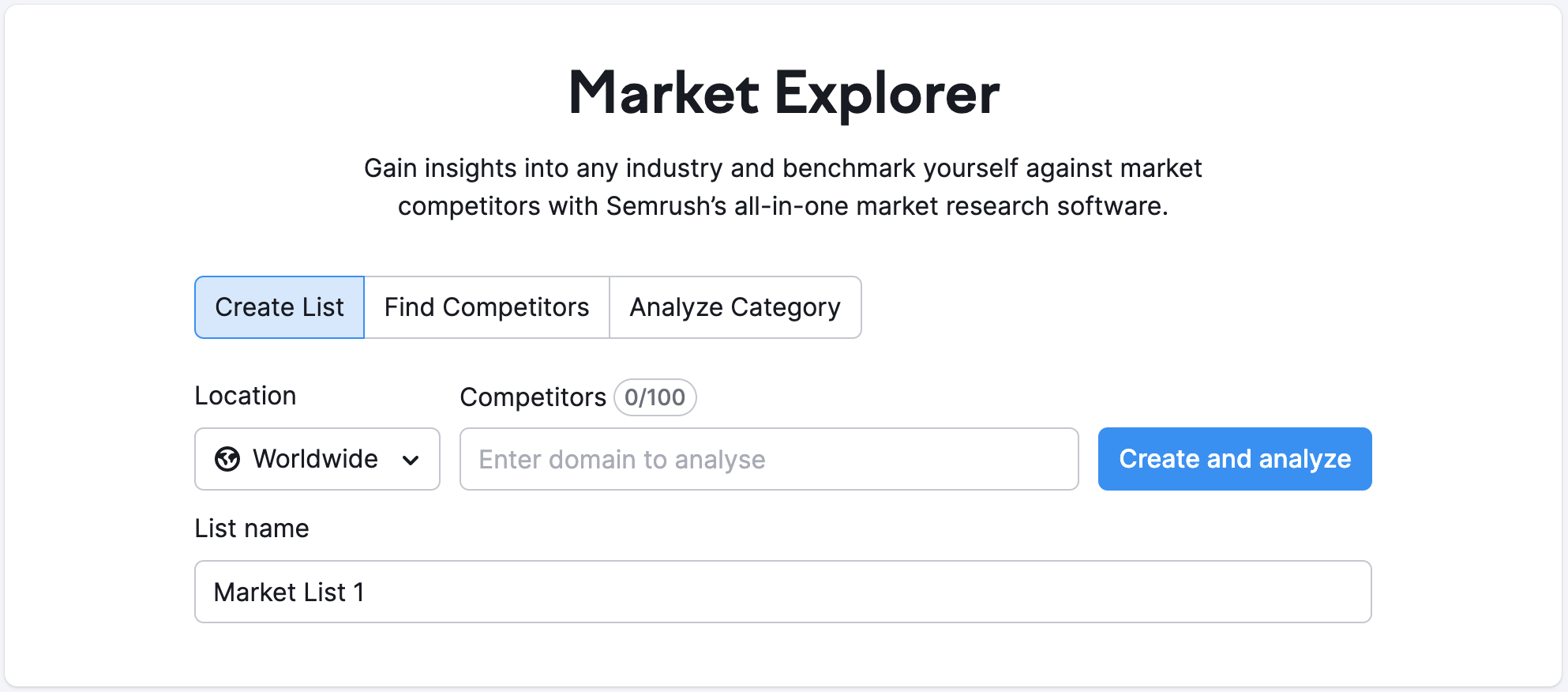
Once you enter the tool, you’ll discover the Overview Report. This report offers a broad view of your competitive landscape. Start with the Growth Quadrant, which shows up to 100 competitors on a single matrix plotted by their audience size and growth rate.
You have the option to customize your view in a few different ways:
- By changing the time period and location
- By turning “Growth Paths” on to view market players’ growth across the selected period of time
- By revealing or hiding certain players on the matrix
- By viewing in full-screen mode, or zooming in or out
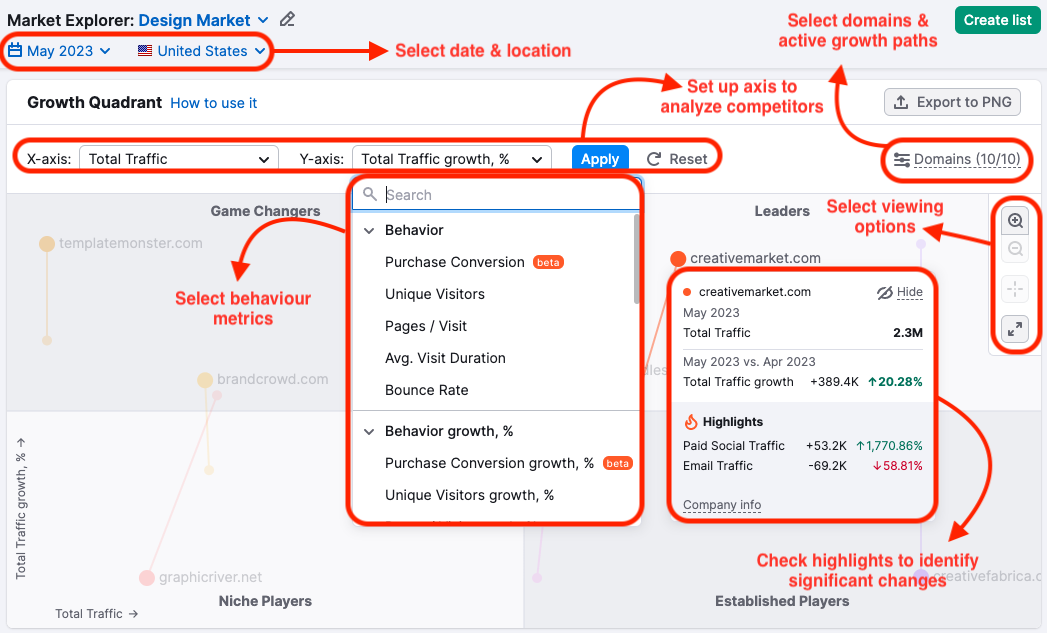
Next, highlight your site (or any competitor’s site) in the Share of Visits list and instantly benchmark your site against:
- The overall market in terms of Total market traffic
- Growth in each traffic source
- Traffic generation strategy
- Audience age and gender
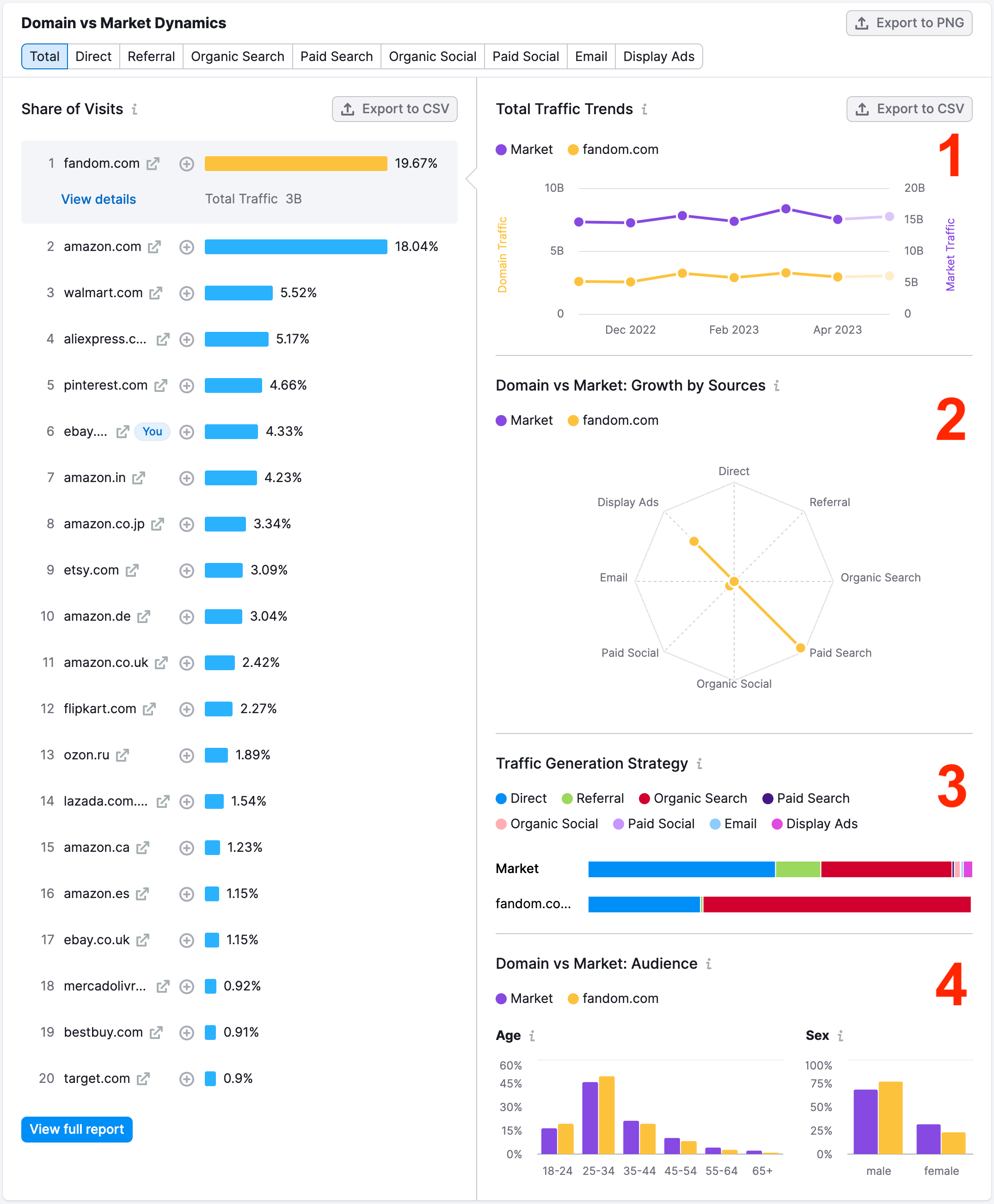
Hit the “Export to PNG” button to save these graphs right to your computer easily.
Read more about how to use Market Explorer.
Benchmarking Website Audience Behavior
The other tool for benchmarking in the .Trends solution is Traffic Analytics. With this tool, you can get an even closer look at any of your market competitors. Begin by importing your list from Market Explorer, or enter the domains you’d like to review.
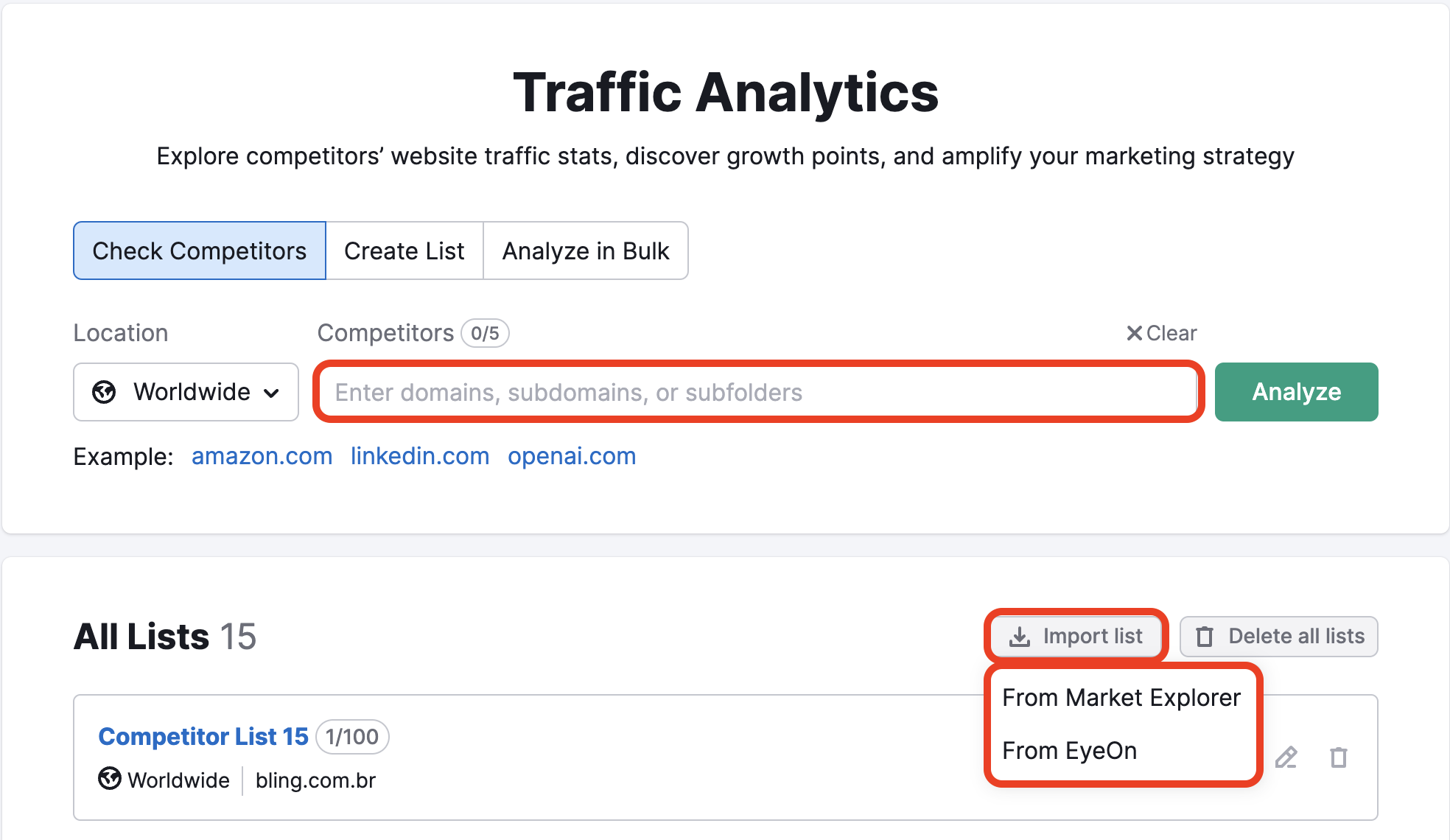
Once you’re inside the Traffic Analytics tool, you can quickly benchmark your site against close competitors in:
- Total traffic
- Audience behavior (time on page, bounce rate, pages per session, etc)
- Mix of traffic channels (direct, referral, organic search, paid search, organic social, paid social, email, and display advertising)
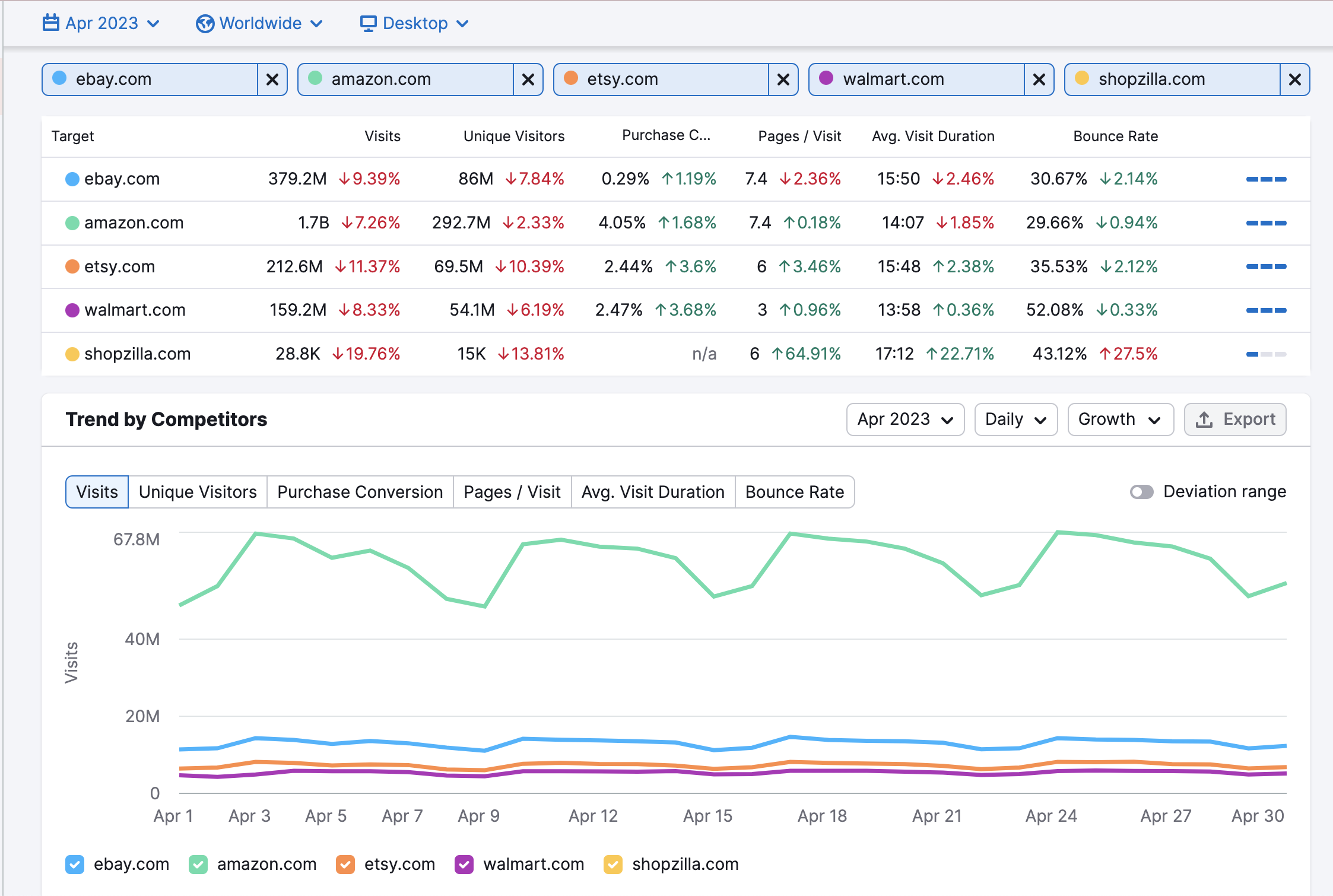
If you scroll down in the report you’ll see the breakdown of monthly traffic estimations from each main traffic source as well.
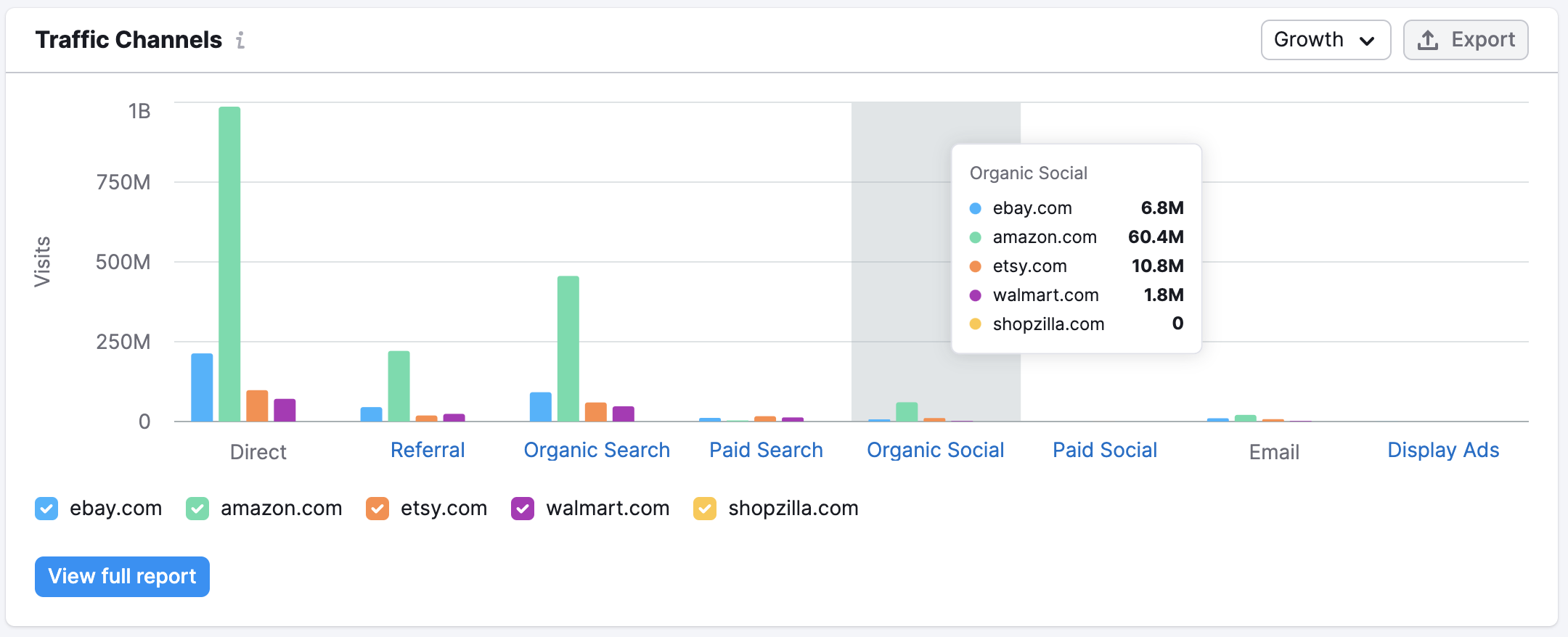
The remaining tabs in the Traffic Analytics tool are all great ways to benchmark against competitors:
- Audience Overview: See how much of an audience you share with each site, and how much of each audience is unique. If your competitor has a lot of unique audience compared to you, that’s a lot of room for you to grow!
- Traffic Journey: See which sites people visit directly before and after browsing your competitor’s site. This could enlighten you to potential partnerships in your niche you’re missing out on.
- Top Pages: Enter your competitor in the search box and see how much of their traffic comes from each of their top pages. If you have similar pages on your site, you can then check how much traffic your comparable page gets and make a plan to grow it.
- Geo Distribution: Enter your competitor in the search box for this report and see how much of their traffic comes from each country where their audience lives.
Read more about how to use Traffic Analytics.
Benchmarking Keywords
Semrush has a tool made specifically for benchmarking your keyword portfolio up against your competitors: Keyword Gap.
Enter your site and up to 5 competitors in the input fields, and the tool will visualize the size and overlap of each site’s keyword portfolios and also give you a table with all of the keywords (shared and unique) between the domains.
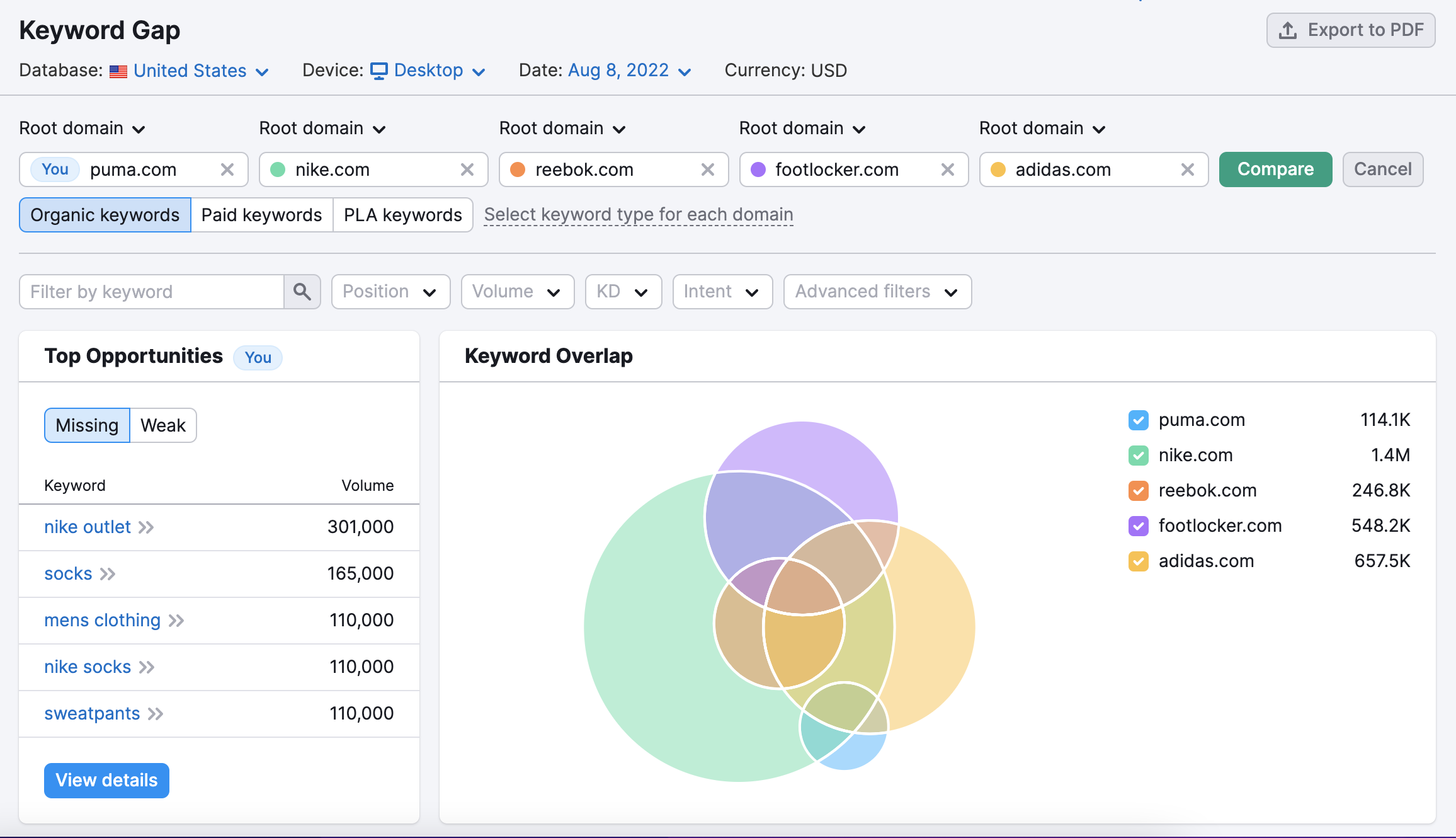
You can make use of the filters to jump directly into the list of keywords you are missing out on and weak compared to your rivals.
Read more about how to use Keyword Gap.
Benchmarking Backlinks
Similar to the Keyword Gap tool is the Backlink Gap. This tool also lets you compare up to 5 competitors and visualize the sizes of each site’s backlink portfolio.
When you inspect the table, select your site in the “Prospects for domain” drop down to see all of the sites where your competition has backlinks, but you do not.
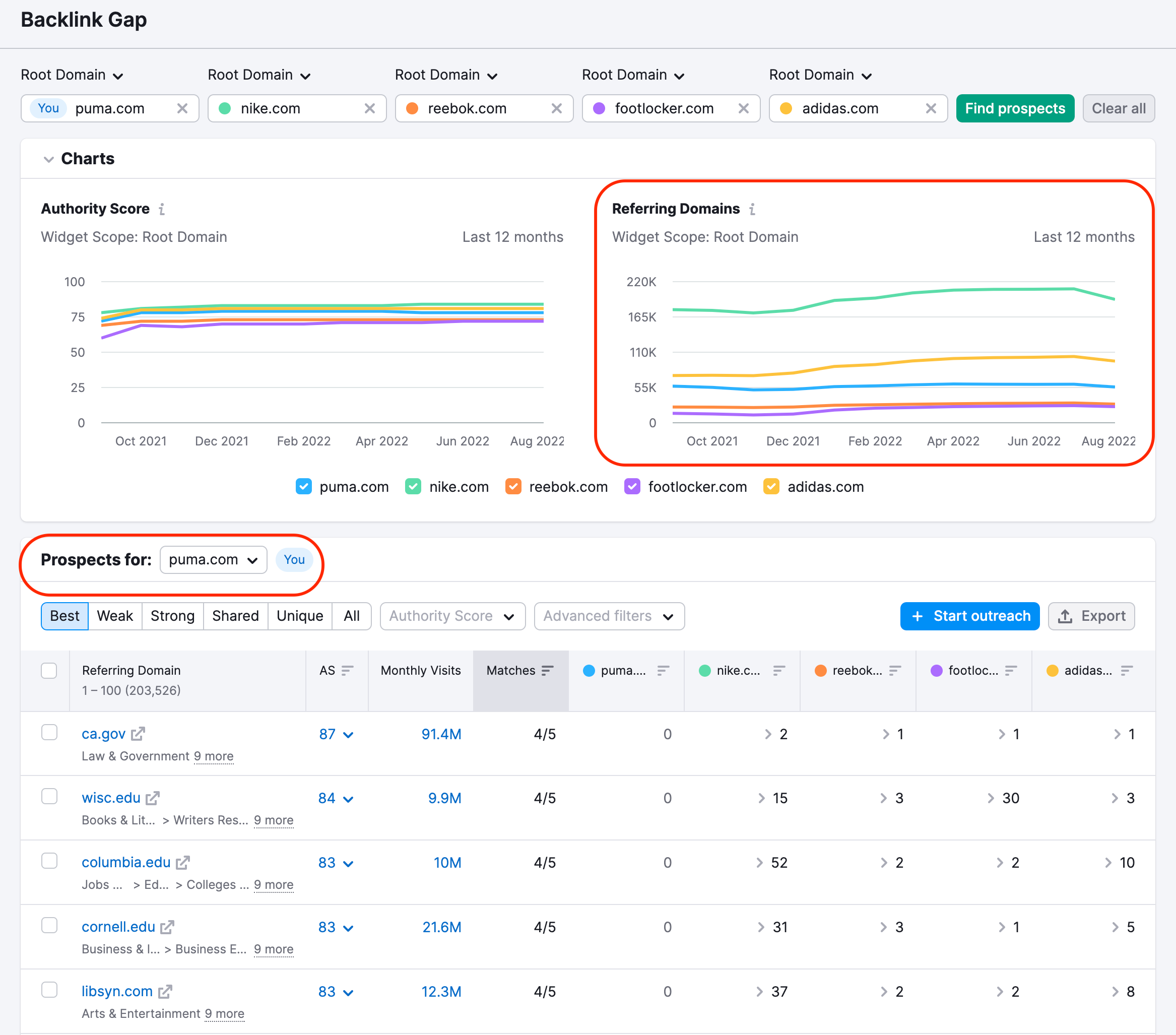
Now you have a list of prospects where you can plan to build links and improve your SEO, catching up to the success of your competitors.
Read more about how to use Backlink Gap.
Benchmarking Content Topics Covered in Your Niche
You can see what other sites in your niche are writing about very quickly with the Topic Research tool.
To start, enter a topic related to your site into Topic Research. Then, add a competitor’s domain where it says “Search content on domain” to see if they are writing about this topic on their site.
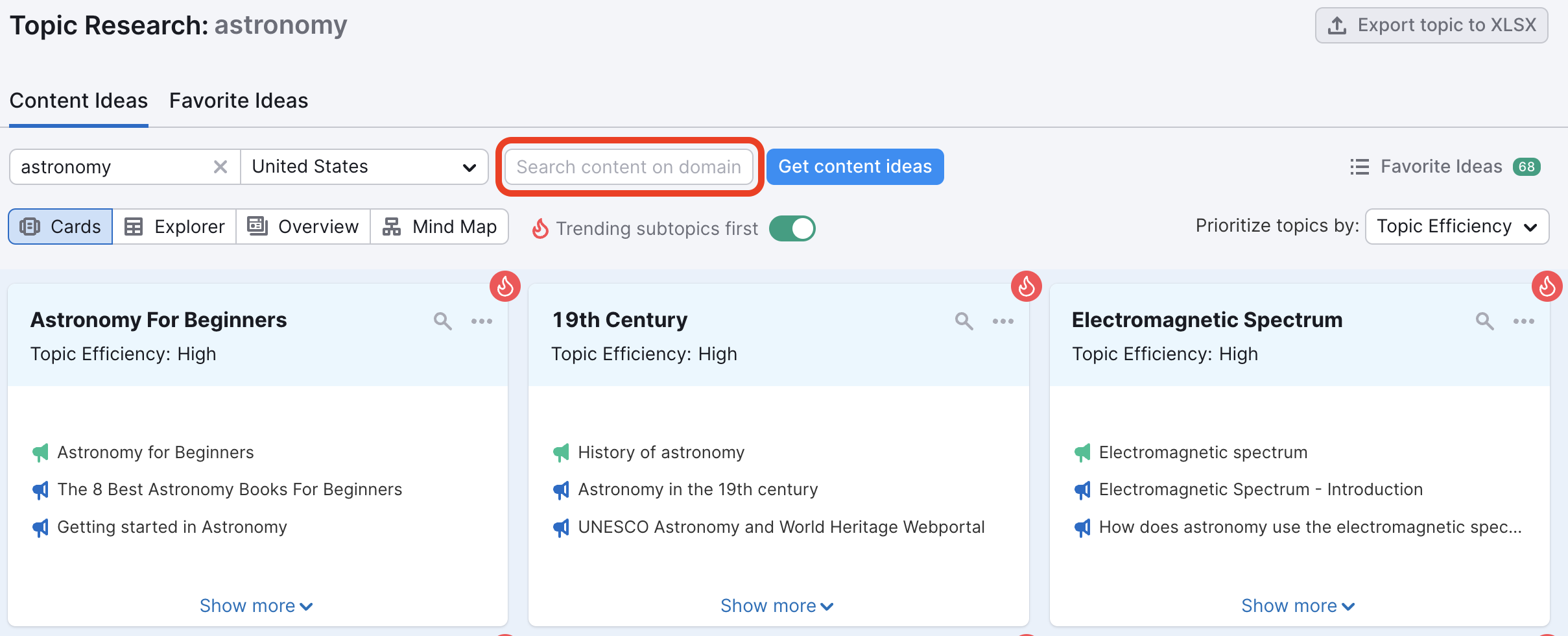
Now you can analyze cards of topics that your competitors write about. Open up a card to see the headlines, questions and related searches for the topic you’re interested in.
Use these ideas for developing new content on your own site to bolster your SEO efforts. Ultimately, covering more content topics will contribute to your goal of reaching those traffic and keyword benchmarks set by the competition.
Read more about using the Topic Research tool.
Benchmarking Social Media Audiences
Go to the Social Media Tracker and create a Project with your brand and your top competitors’ brands to benchmark the leading audiences and engagement levels on each social network.

Read more tips on how to use Social Media Tracker.